Charcoal toasted peppermint meringue with samphire curd | Truly WA
Paul Iskov from Fervor demonstrates how to incorporate native Western Australian ingredients into a simple but deliciously light and tasty dessert. Enjoy at home or on the road, for a truly local indulgent dish.
Preparation and cook time: 60 mins | Serves: 6
Ingredients
Meringue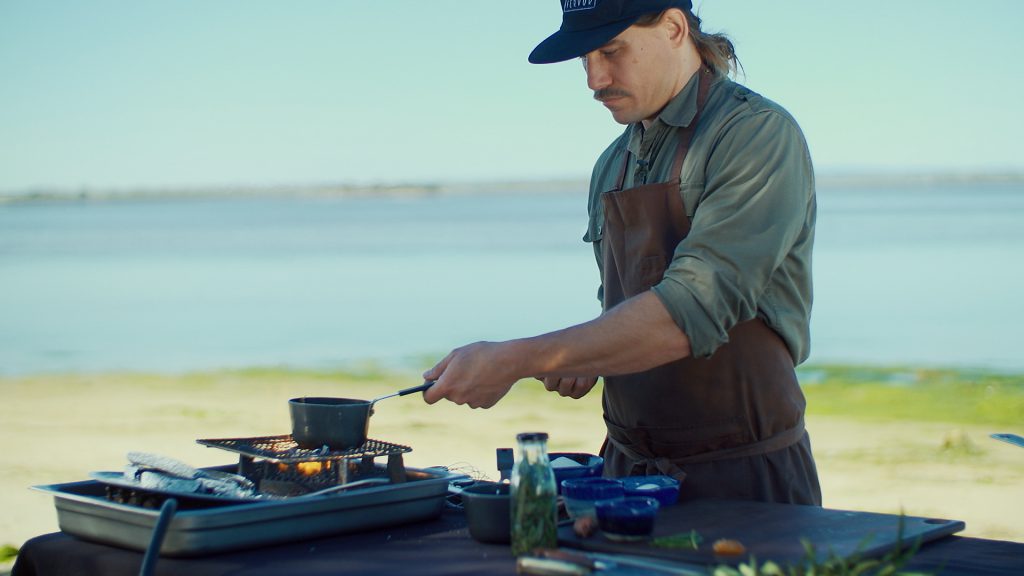
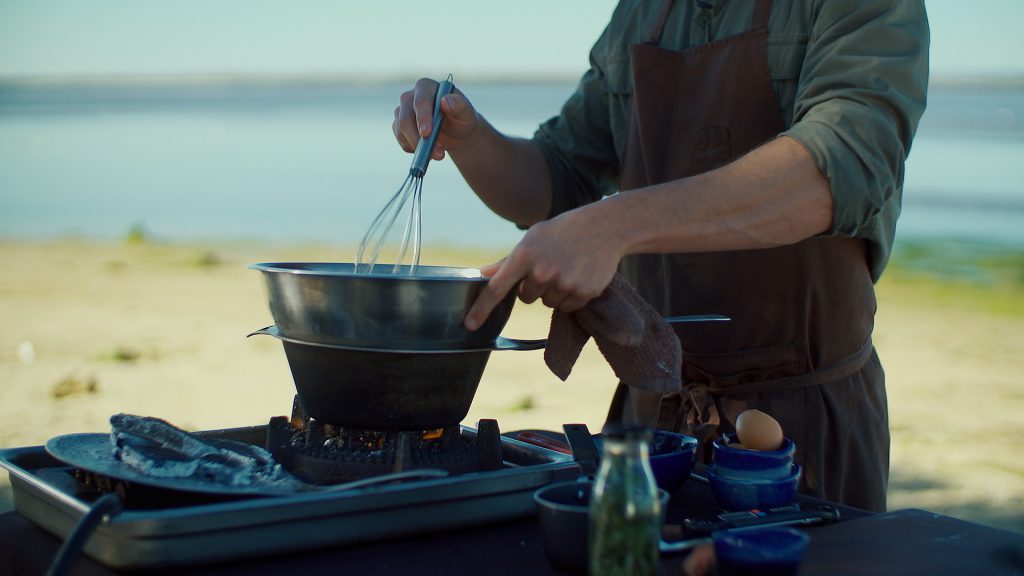
205g caster sugar
60g water
130g free-range egg whites, cold
65g caster sugar, extra
Peppermint leaves
Samphire curd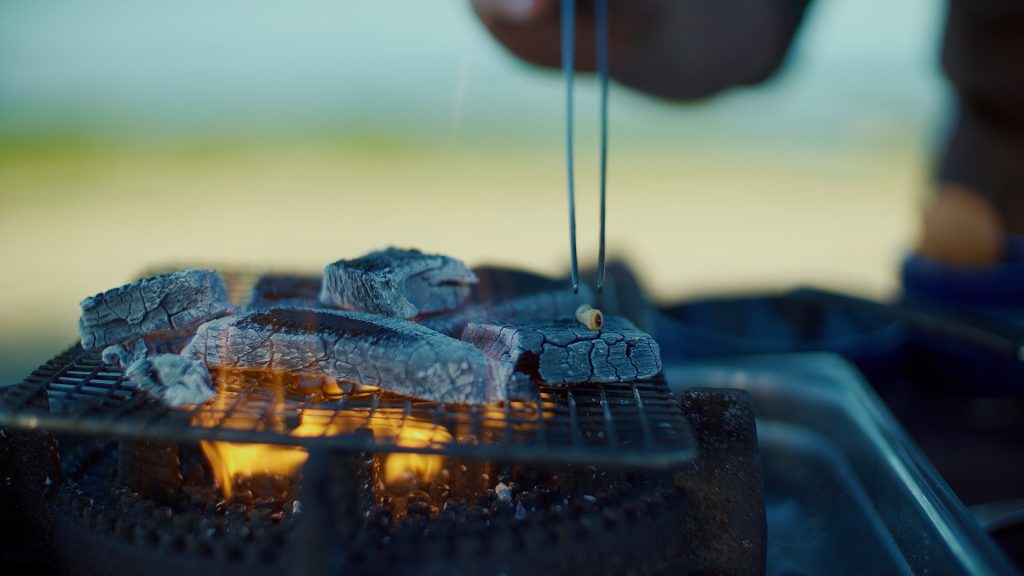
40g water
2 whole free-range eggs
2 free-range egg yolks
100g caster sugar
80g cold diced butter
Samphire, finely chopped
Pinch of salt
Foraged ingredients
Bardi grub
Samphire
Edible gum (‘bush lolly’)
Method
For the meringue
- Add some peppermint leaves to the water and let infuse for awhile.
- In a heavy-based pot, heat the sugar and water up to 121 degrees.
- While the sugar syrup is coming up to temperature, remove the egg whites from the fridge and pour into a large, clean bowl. Whisk the egg whites on high speed until whites start to become fluffy, or form ‘peaks’. Slowly add the remaining 65g of sugar while whisking. The whites should double in size.
- When the sugar syrup reaches 121 degrees, remove from heat and slowly drizzle syrup onto egg whites while still whisking at a high speed.
- Once the syrup is in, continue to whisk until the mixture starts to cool (5-10 minutes).
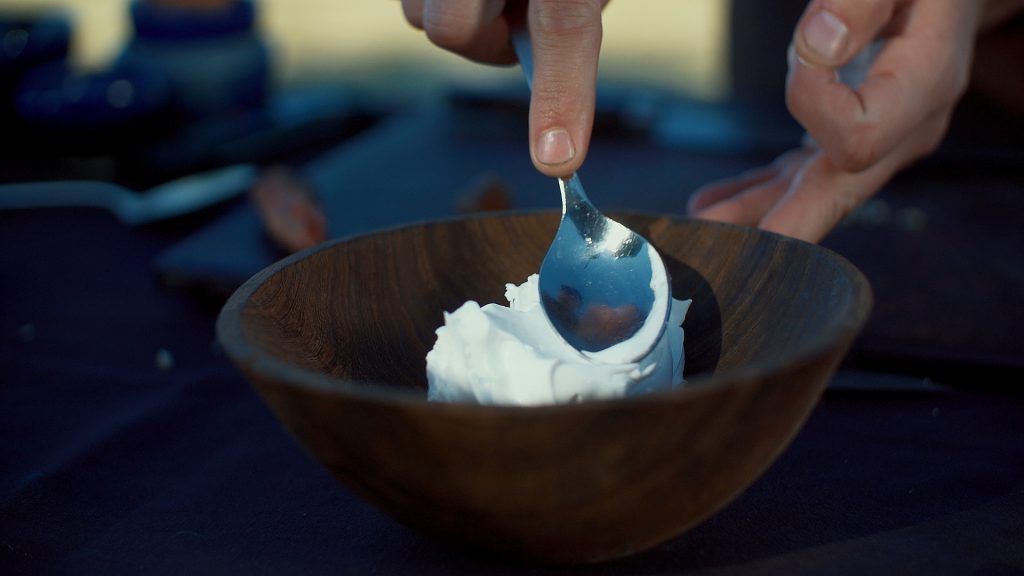
For the curd
- Set up a double boiler. Whisk eggs, yolks, sugar and salt in a medium-sizes bowl and place over the double boiler.
- Whisk until mixture starts to thicken (5-10 minutes).
- Once thickened, slowly add the diced butter, about 2-3 small blocks at a time.
- Once all the butter is combined with the rest of the mixture, remove from heat and add in finely chopped samphire.
- Store in the fridge until required.
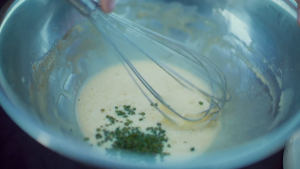
To serve
- Heat a piece of good-quality, non-toxic charcoal on the flame until glowing white.
- Place a spoonful of the meringue into each bowl.
- Pick up the charcoal with tongs and in a safe area.
- Blow any ash off the charcoal outside, over the fire.
- Using the tongs, gently ‘brand’ the meringue with the charcoal for 5-6 seconds to leave a caramelised crust. Alternatively, use a blowtorch to caramelise the crust.
- To plate, add a spoonful of the curd to the bowl with shavings of the bush lolly, sprinkled on top of the dish.
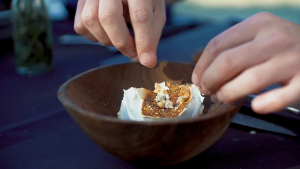
Native ingredients in this dish
Samphire
High in Vitamin A and a good source of calcium and iron, samphire is a salt-tolerant succulent that is deliciously salty. It’s also commonly referred to as sea asparagus, swamp grass, glasswort, pickleweed or sea beans.
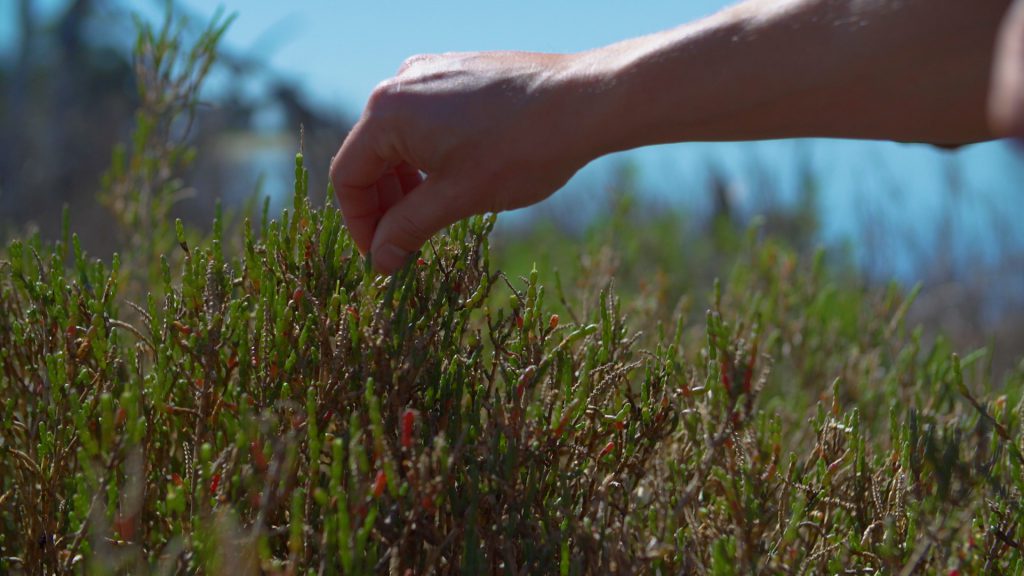
Peppermint
The peppermint tree has a beautiful smell and is unique to the South West of WA. The tree’s leaves, twigs and gum have been used both ceremonially and medicinally by the Noongar people to ease congestion, and in antiseptic washes and in ointments. The wood ash was also in medicine and for cooking.
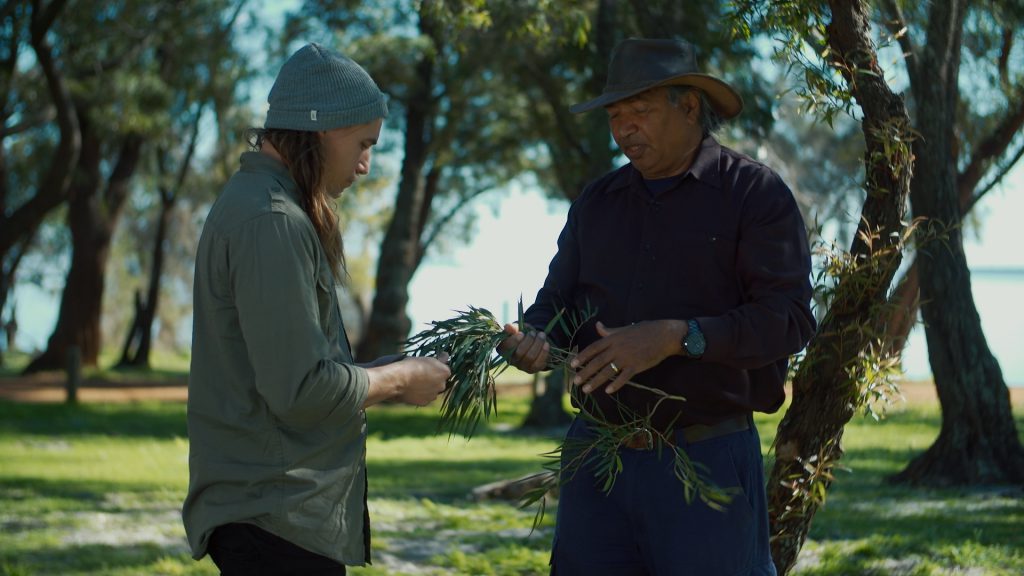
Edible gum (bush lolly)
Many different plants contain edible gums (the sap or also known as ‘bush lolly’) which on this occasion, was from an acacia tree. Traditionally, the sap was also used as a glue!
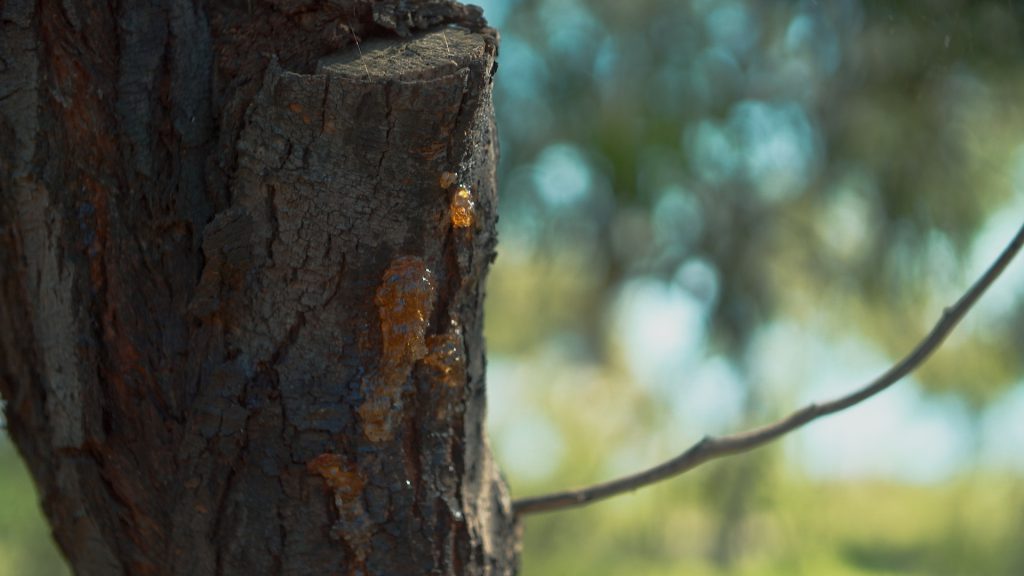
Bardi grub
Although the bardi (or witchetty) grub is one of the best-known bush foods, little is known about them. What we do know is they’ve been important to the diets of Aboriginal people for thousands of years, are high in protein and taste similar to scrambled eggs.
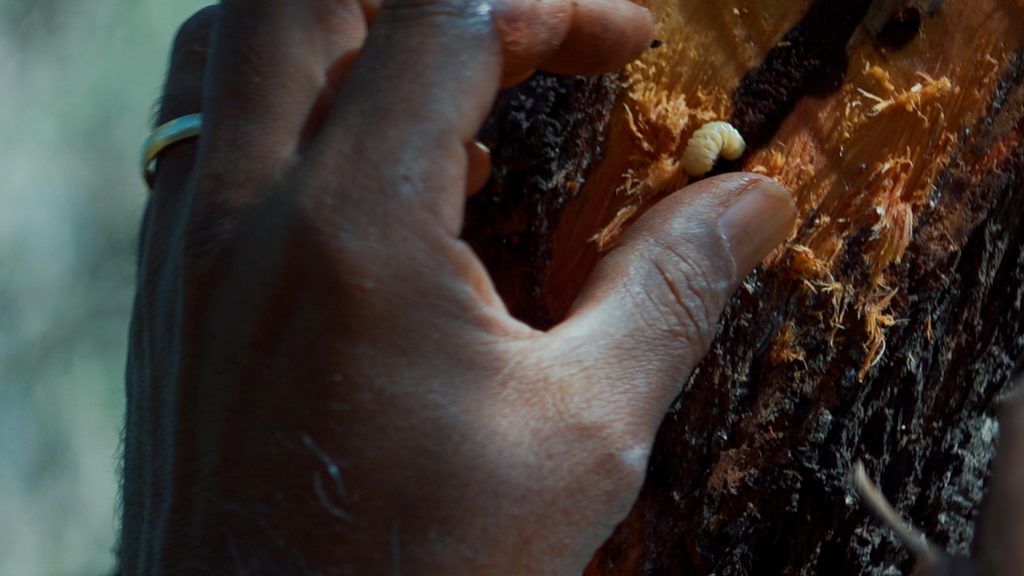
Cooking with native ingredients
As the bush industry has grown, there have been more opportunities to buy plant food. Most native ingredients can be ordered online and in some cases, you can grow your own. Check out some simple tips for setting your garden up for success.
If you can’t order native ingredients because of seasonality or supply, there’s always an equivalent or substitute.
Here are some local WA suppliers to consider:
Plants
- Zanthorrea Nursery, Maida Vale
- Lullfitz Nursery, Wanneroo
- Australian Native Nursery, Oakford
- Friends of Kings Park, Kings Park: they conduct plant sales in September and November to raise funds to support research and special projects at Kings Park and Botanic Garden.
Fervor, a journey through Australian native food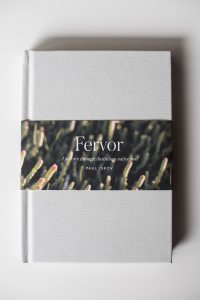
Discover and be inspired by the best recipes from Paul’s roving dining experience in this accessible and exciting cookbook showcasing Australian native foods for the home chef.
The recipe featured in this article is an extract from Fervor and is out now and available at all good book stores and online.
Our commitment to understanding, diversity and inclusivity
As a member of the Wesfarmers Group, Kleenheat is proud to contribute to the ongoing success of Wesfarmers Stretch Reconciliation Action Plan.
Wesfarmers’ longstanding association with the Clontarf Foundation (previously the Clontarf Football Academy) also continues to provide valuable opportunities for young Aboriginal and Torres Strait Islander people, such as Jeff Farrell, to pave their own career and life path.
Through a range of employment, education, cultural awareness training and community-based initiatives, Kleenheat’s striving to ensure Aboriginal and Torres Strait Islander people feel welcome in our businesses as employees, customers, suppliers and visitors.